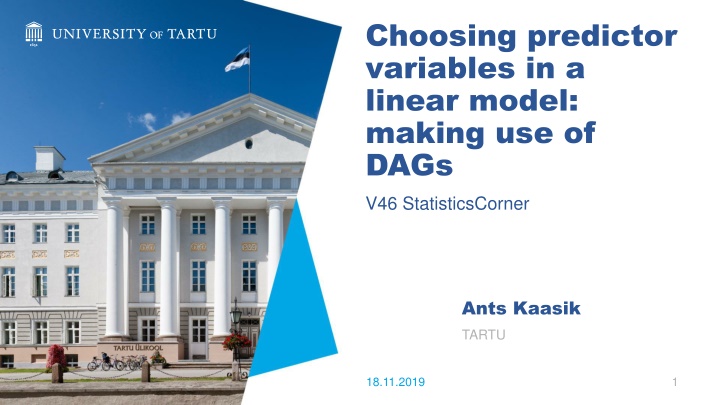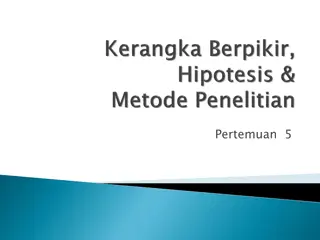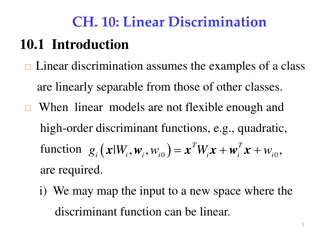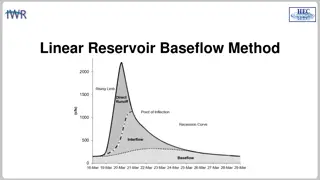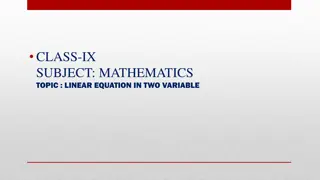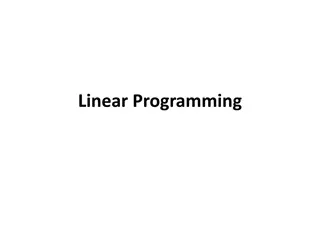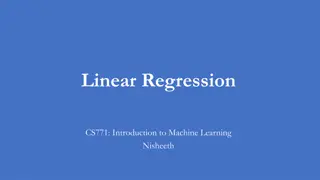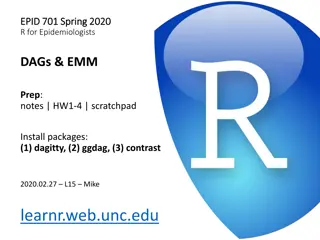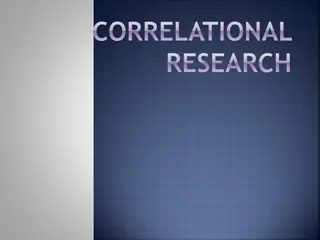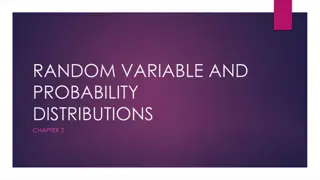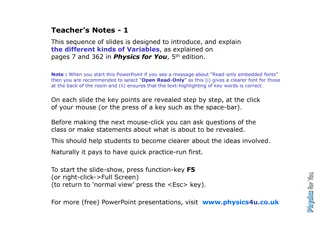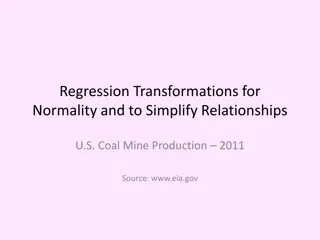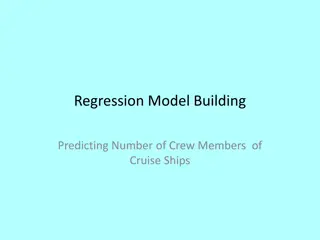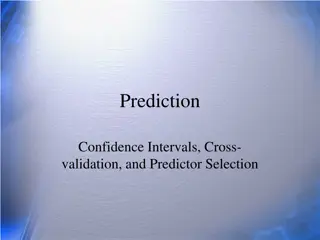Choosing Predictor Variables in a Linear Model Using DAGs
Constructing a statistical model involves selecting the most relevant predictor variables, avoiding multicollinearity, and addressing post-treatment bias and collider effects. Techniques such as model comparison, adding omitted variables, and understanding direct versus indirect effects play a crucial role in model building. By leveraging Directed Acyclic Graphs (DAGs), researchers can navigate the complex relationships between variables and make informed decisions on model selection and interpretation.
Download Presentation

Please find below an Image/Link to download the presentation.
The content on the website is provided AS IS for your information and personal use only. It may not be sold, licensed, or shared on other websites without obtaining consent from the author.If you encounter any issues during the download, it is possible that the publisher has removed the file from their server.
You are allowed to download the files provided on this website for personal or commercial use, subject to the condition that they are used lawfully. All files are the property of their respective owners.
The content on the website is provided AS IS for your information and personal use only. It may not be sold, licensed, or shared on other websites without obtaining consent from the author.
E N D
Presentation Transcript
Choosing predictor variables in a linear model: making use of DAGs V46 StatisticsCorner Ants Kaasik TARTU 18.11.2019 1
Building a statistical model (e.g. LMM) We usually have several predictors What predictors variables should we include? Perhaps we should use model selection (model comparison)? Source: https://en.wikipedia.org/wiki/Stepwise_regression 2
Basics 1: multicollinearity Standard errors of coefficients increase Interpretation of coefficients obviously impossible Prediction is unharmed Source: http://www.sthda.com/english/wiki/ggplot2-quick- correlation-matrix-heatmap-r-software-and-data- visualization 3
Basics 2: omitted variables Adding omitted variables can improve estimate precision TREATMENT WEIGHT Regression coefficients become unbiased (if predictor variables are correlated) LENGTH 4
Basics 3: Post-treatment bias TREATMENT Adding post-treatment variables will hide the effect of treatment HEALTHY Regression coefficient for treatment will not be interpretable FITNESS Model selection will favor post- treatment variables 5
Direct vs indirect effect TREATMENT HEALTHY In certain situations it might be reasonable to include post- treatment variables FITNESS 6
MENTAL CAPABILITY PHYSICAL CAPABILITY Collider bias Conditioning on a dependent variable causes spurious correlations SURVIVAL mental=rnorm(300) physical=rnorm(300) survival=rbinom(300,1,plogis (2*mental+2*physical)) Thus selection can distort regression coefficients 7
DAG: directed acyclic graph Interested in the direct effect of X on Y. Should we include Z? X Y X Y X Y Z Z Z B) CHAIN (or PIPE) A) FORK C) COLLIDER Yes for A). Yes for B). No for C). 8
Direct vs indirect effect (2) In certain situations it might be reasonable to include post- treatment variables But things can get complicated when we encounter unmeasured variables TREATMENT HEALTHY ENVIRONMENT (NOT MEASURED) Now one flow is closed but another is opened FITNESS 9
Direct vs indirect effect (3) TREATMENT HEALTHY ENVIRONMENT (NOT MEASURED) FITNESS treatment=rep(c(0,1),each=150) envir=rbinom(300,1,0.5) healthy=rbinom(300,1,0.3 + treatment*0.3 + envir*0.4) fitness=rnorm(n,healthy+2*habitat) m1=lm(fitness~treatment+healthy) 10
Direct vs indirect effect (4) TREATMENT HEALTHY ENVIRONMENT (NOT MEASURED) FITNESS Why does knowing treatment proovide information about fitness when we already know the health? Because e.g. when treatment was not applied but organism is healthy then this is probably because of positiive environment effect and thus we also expect higher fitness 11
Direct vs indirect effect (5) Not treated Treated Indeed, given health status, treatment seems to lead to a drop in fitness median Not healthy Healthy 12
Descendants X Y X Y X Y Z Z Z D D D B) CHAIN (or PIPE) A) FORK C) COLLIDER Quite often we have not measured the possible predictor directly but only have a descendant of it available for consideration Conditioning on it has a similar (but smaller) effect as conditioning on the actual predictor 13
Examples Interested in the direct effect of X on Y. What predictors should we include? Z Y X A It is enough to condition on Z as this blocks both indirect paths. 14
Examples (2) Interested in the direct effect of X on Y. What predictors should we include? A U B X Y As U is unmeasured we need to condition on both A and B to get the direct effect. 15
Examples (3) Interested in the direct effect of X on Y. What predictors should we include? Z Y X A Condition on Z as this blocks the upper path. Do not condition on A as this would open the lower path. 16
Examples (4) Interested in the direct effect of X on Y. What predictors should we include? A U B X Y The lower path is blocked by U and cannot be opened. As A is a collider we should not condition on it. 17
Examples (5) Interested in the direct effect of X on Y. What predictors should we include? A D U X Y The best we can do is to condition on both D and A as the first almost blocks the lower path (and thus open the upper) which we block by conditioning on A. 18
Examples (6) Interested in the direct effect of X on Y. What predictors should we include? X Z U Y There is no way to close both paths conditioning on Z block one path but opens another. We cannot estimate the direct effect of X on Y. 19
Summary Certain typical situations can easily be handled by DAGs DAGs are very useful when coefficient of a predictor changes the sign when some additional predictor is added Creating a DAG also helps in the problem setup When we are certain that the predictor has no arrow entering it then we can definitely include it Otherwise it is not clear-cut 20
Thank you for the attention! 21
